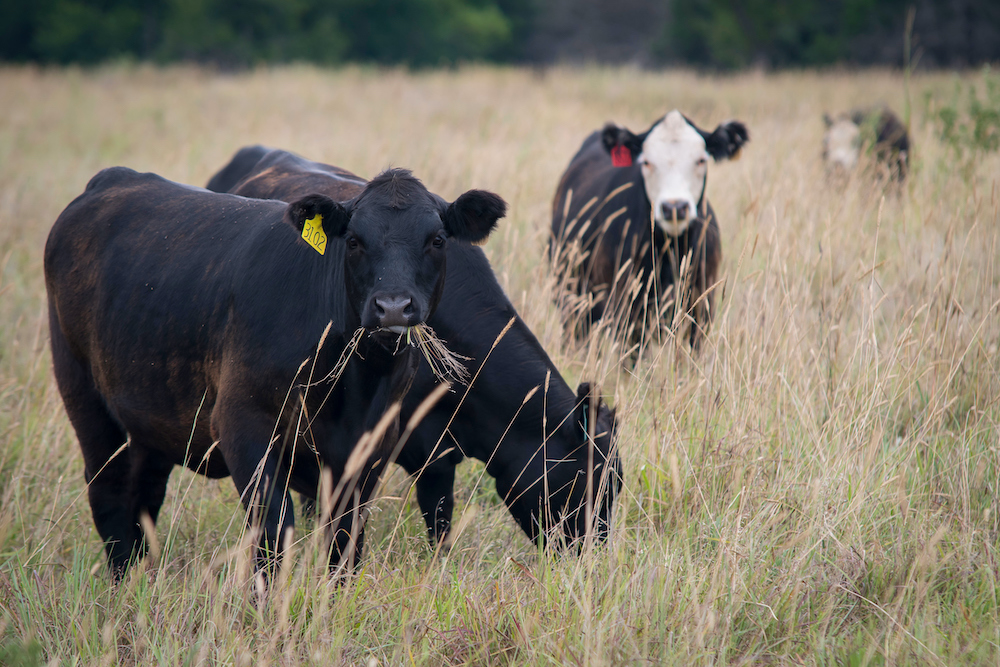
Agricultural News
Prussic Acid Toxicity Explained as Recent Drought Ramps up Risk
Tue, 28 Jun 2022 09:57:28 CDT
 By Gail Ellis
By Gail Ellis
Ranchers turning cattle onto pastures with new forage growth this season should watch out for prussic acid toxicity, a condition fatal to livestock and commonly linked to consumption of Johnsongrass.
In counties of Oklahoma that recently suffered from extreme drought conditions, ranchers are reporting cattle deaths suspected from prussic acid toxicity.
"One of our producers found a calf and cow dead on a small patch of Johnsongrass," said Dana Bay, Oklahoma State University Extension agriculture educator in Ellis County. "We've gotten a lot of calls about testing, and several grass samples have tested positive, resulting in ranchers not moving cattle to new pastures."
Barry Whitworth, DVM, OSU Extension southeast district area food and animal quality health specialist, said when temperatures rise and the ground dries out, certain plants in the sorghum family become toxic and can kill cattle at a rapid rate. Johnsongrass is one of Oklahoma's most invasive plants.
"Hydrocyanic acid, which is also referred to as cyanide or prussic acid, is a toxin created when the harmless hydrocyanic glycosides in plants are stressed or break down," he said. "Once a plant's hydrocyanic glycosides are damaged, they quickly convert to prussic acid."
When cattle ingest the plants high in hydrocyanic glycoside and break them down by chewing, prussic acid is released in the rumen and absorbed into the blood stream.
Whitworth explained that once prussic acid reaches the circulatory system, the toxin prevents cells in the body from taking up oxygen. The blood becomes saturated with oxygen that cannot be absorbed by cells, and cattle perish from asphyxiation within minutes. Rosslyn Biggs, DVM, OSU Extension beef cattle specialist, explains what happens in more detail in this video from SUNUP, OSU Agriculture's television show.
Clinical signs of prussic acid toxicity are:
• Muscle tremors
• Increased respiration rate
• Excess salivation
• Staggering
• Convulsions
• Collapse
Producers should note prussic acid levels are highest in the leaves of young plants, and the upper leaves contain the most toxin. Stress from drought or frost increases prussic acid as well as fertilizing with large amounts of nitrogen and nitrogen/phosphorus soil imbalances.
While Johnson grass is high in prussic acid, the toxicity of other sorghum plants such as Foxtail millet is low. Ranchers should first identify the toxicity level of any sorghum variety intended for grazing purposes. Forage samples can be submitted to any OSU Extension county office for testing at OSU's Soil, Water and Forage Analytical Laboratory in Stillwater.
Once a sample of grass is collected, producers should immediately take it to the local Extension office for testing. Bay said a county Extension educator can also meet the rancher on site and perform a test at the field. When moving cattle from one pasture to another along a road, she also advised to take caution with the Johnsongrass that often grows in roadside ditches.
Take the following steps to prevent prussic acid toxicity:
• Never turn hungry cattle into onto a new pasture
• Take soil samples and fertilize accordingly
• Graze mature plants
• Wait until plants are cured before grazing after frost (at least seven days)
• Rotate pastures to keep cattle from consuming lush regrowth
• Place one or two cows in a pasture and observe for problems before turning in all cattle
When an animal displays signs of prussic acid toxicity, the producer should immediately remove all animals that appear to be normal to a new pasture and contact their veterinarian. Sick animals can recover if treated quickly with sodium nitrite and sodium thiosulfate to reverse the toxicity.
Additional OSU Extension resources are available through SUNUP:
• Controlling and remediating Johnsongrass through the process of wicking
• Johnsongrass toxicity after rain
• Nitrate toxicity in summer forages
• Identifying Johnsongrass and suppressing its growth in non-grazed areas
• Toxins in stressed forages
OSU Extension uses research-based information to help all Oklahomans solve local issues and concerns, promote leadership and manage resources wisely throughout the state's 77 counties. Most information is available at little to no cost.
WebReadyTM Powered by WireReady® NSI
Top Agricultural News
More Headlines...





